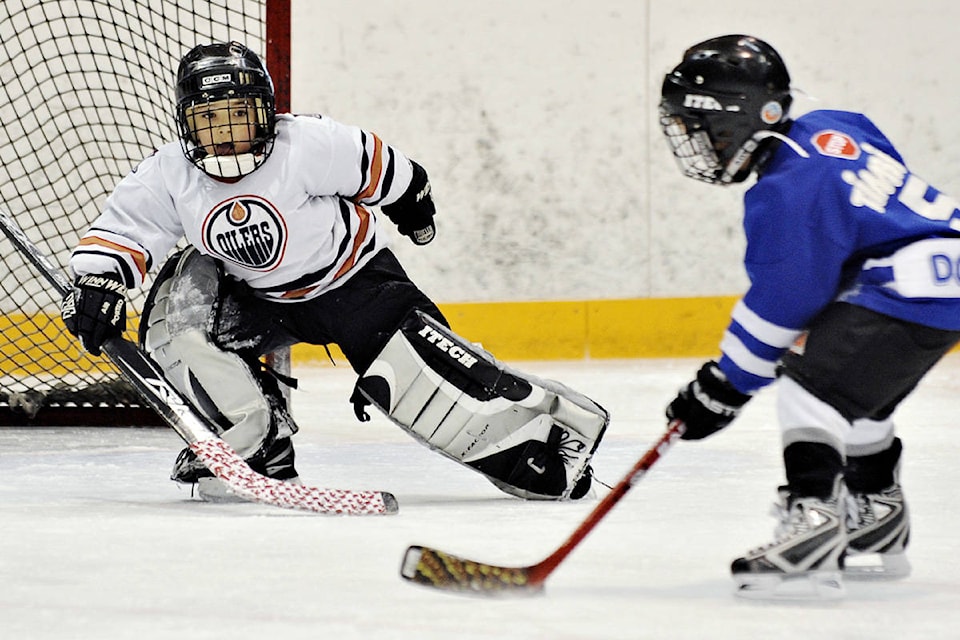For the youngster looking to start his or her hockey career, things are a little bit different than they used to be.
Gone are the days of four, five and six-year-olds skating slowly up and down the full length of ice, hoping and praying to touch the puck.
Thanks to changes that have trickled down from Hockey Canada and BC Hockey, tyke and novice teams now practice and play exclusively on half a traditional hockey rink.
The Whitehorse Minor Hockey Association (WMHA) was an early adopter of the new format, implementing the changes a full year before its governing body, BC Hockey, made it mandatory.
Desiree Martsinkiw, who oversees the tyke division, said although it was a big change for some players and parents to switch from full-ice to half-ice, reception to the change has improved.
“At first, for the ones that did play full-ice for so long, it was a big change, but once they got the idea behind it and people saw the structure, they were OK with it,” said Martsinkiw.
“They realized it does work and that we can have four teams on the ice instead of just two.”
The decision to change tyke — also called initiation — and novice programs to cross-ice allows for players to be more engaged, according to statistics published by BC Hockey.
In a half-ice situation, players take six times as many shots, receive five times as many passes and touch the puck twice as often.
Keegan Goodrich, manager of communications for BC Hockey, said the change brings hockey more in line with other sports.
“A five-year-old playing baseball doesn’t start playing in a major league baseball stadium with a pitcher throwing from 60 feet,” said Goodrich in an email. “They start in a smaller field playing t-ball. Hockey should be no different with size-appropriate playing surfaces.”
The tyke program in Whitehorse has grown substantially, with registrations ballooning from as low as 38 just a few years ago to close to 70 this season.
More teams mean more ice time is required for the division, and half-ice programs allow four teams to train at once instead of the usual two.
Justin Halowaty, president of WMHA, said that while there is still some grumbling about the changes, ultimately the goal is to help players improve and learn to love the game.
Once players get to the atom division, they generally have the skating and puck skills required to play a full-ice game with all the traditional rules.
BC Hockey released a 25-page transitional plan designed to help coaches and associations assist players make the jump from half-ice to full-ice, introducing elements like offsides and icings.
Ultimately, Martsinkiw said the changes have been positive for those that matter most — the players.
“My son played on full-ice,” said Martsinkiw. “A full-ice game for him at that age, he was five, was hard. Not every kid will get to touch the puck if they don’t know how to skate.”
“If they’re on half-ice, they get to touch the puck.”
Contact John Hopkins-Hill at john.hopkinshill@yukon-news.com
